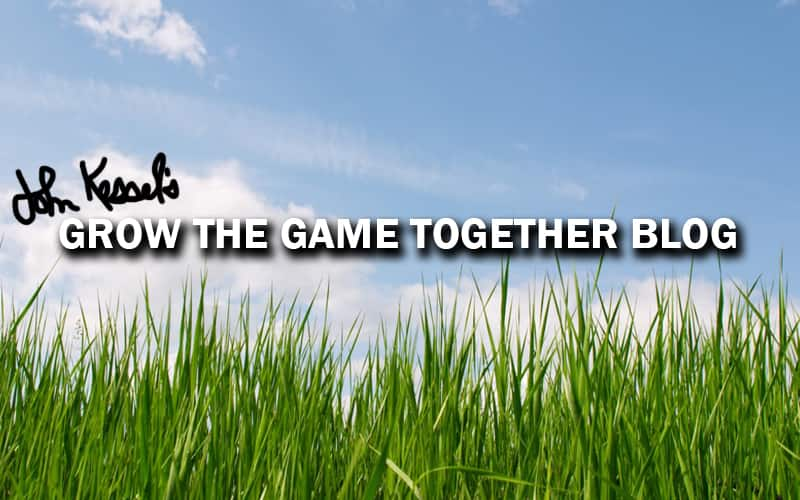
This month, I journeyed to Canada to work with ACE Volleyball club as part of their Make-A-Wish project. The athletes had raised more than $24,000 beyond their club costs for the second year in a row; enough to send four Alberta families with terminally ill children to Florida and Disney World.
It was a special day; and it made me reflect on how many good things in our sport happen north of our border. I had previously been up in Nova Scotia, working with the L’Intrepide d’Halifax and many coaches at the Ecole Scondaire du Sommet. But this trip was in winter. I discovered a secret to Canadian volleyball training that I will share here in pictures – seeing them actually GROW volleyballs on the roadside and train hidden under the snow. They are some rugged athletes for sure.
There are other things that make me smile about Canadian volleyball. Canada and the United States were two of the 12 nations that founded the FIVB (International Volleyball Federation), which now has more than 220 member nations.
In 1976, Canada hosted the Olympic Games in Montreal. There, the U.S. Volleyball Association (as it was known) collaborated with Canada to make the first Olympic technical film. At that Games, the back-row attack for men became a force for the first time, as seen in the USSR-Poland gold-medal match (Poland won).
U.S. volleyball coach Bill Neville, who coached Canada’s men’s team in Montreal, recently told this story about his plan to defeat the Russians in a crucial pool play match, seeking the insights of our dear late mentor and friend Carl McGown.I was the coach of the Canadian Men’s Olympic Volleyball Team in 1976. I was young, dreamer, and idealistic. Carl was up in Montreal with a contingent of U.S. coaches to study the Olympics. I had been Carl’s assistant on the U.S. National Team and longtime friend. Prior to our match against the eventual Olympic champion, Poland, I sought out Carl to review my game plan against the Poles. I was excited. I believed I had crafted a plan to upset the Powerful Poles. I wanted Carl’s thoughts and hopefully his enthusiastic approval. As usual Carl offered only a contemplative stare as he reviewed my world-beating blueprint.
“So what do you think?” I asked with great anticipation. After a moment, in typical, analytical, bluntness, he answered, “You can’t serve water with a fork.” I got defensive. “Yeah but, but...“ He quietly let me hang. Then he summed it up: “You have a lot of forks.” We lost to Poland 3-0.
In 1985, I started a relationship with some Canadian youth leaders while at the FIVB Youth Volleyball Symposium in Tokyo, Japan and I spoke at two international youth clinics in Canada. We still collaborate and share in all three disciplines. I love to get to Canada when my schedule allows, as you can see in this YouTube clip of a clinic I did for VolleyballBC.
The 1996 Olympic Games brought a great comeback story as beach volleyball made its debut in Atlanta. John Child and Mark Heese of Canada lost in the first round of double elimination and battled back to win the bronze medal.
Canada’s indoor men’s team has been out of the Olympics for a while, but it returned in 2016 and opened by defeating the U.S. Men 3-0 in pool play. Since coaches love seeing the bell curve of variance and risk, here is one from that match on serving!The Paralympic side continues to see sharing and competition. For more than a decade, the world’s best paravolley standing men’s team hailed from up north, with multiple world titles. Since the men’s standing game was dropped to reallocate the space to the women’s sitting game in 2004, we have since seen some great competition up north. That inclues the 2015 Toronto ParaPan Ams, where the U.S. Men’s Sitting Team beat Canada to qualify for the 2016 Paralympic Games for the first time since 2004. The Canadian women’s sitting team also qualified for the 2016 Paralympics.
Some of my favorite memories include the changing of the lighted outdoor skating rinks (complete with boards and plexiglass) into summer doubles courts by bulldozing 18 inches of sand in through the Zamboni entrance. The lights let you play until 2a.m. or later. In the fall, they bulldoze the sand out into a big pile, cover it to protect it from blowing away, and lay down the ice again for hockey.
While I was in Alberta, only two sports were on TV: curling and ice hockey. Still, the sport of volleyball is strong and more and more clubs are getting indoor beach courts and hard courts.
Canada's Sarah Pavan, who played indoor volleyball at Nebraska and competed in beach volleyball at the 2016 Olympic Games and is perhaps one of the country's greatest players, recently wrote this article: What Will your Teammates Remember About You 10 Years from Now? It is eye-opening.
Thanks to all those Canadians who grow the game together, leaders like Vic Lindal, Mark Tennant, Gilles LePine, Leo Van Dame, Leanne Marriott, and countless more. From the grassroots to international, they are wonderful neighbors and partners for sure, eh?
